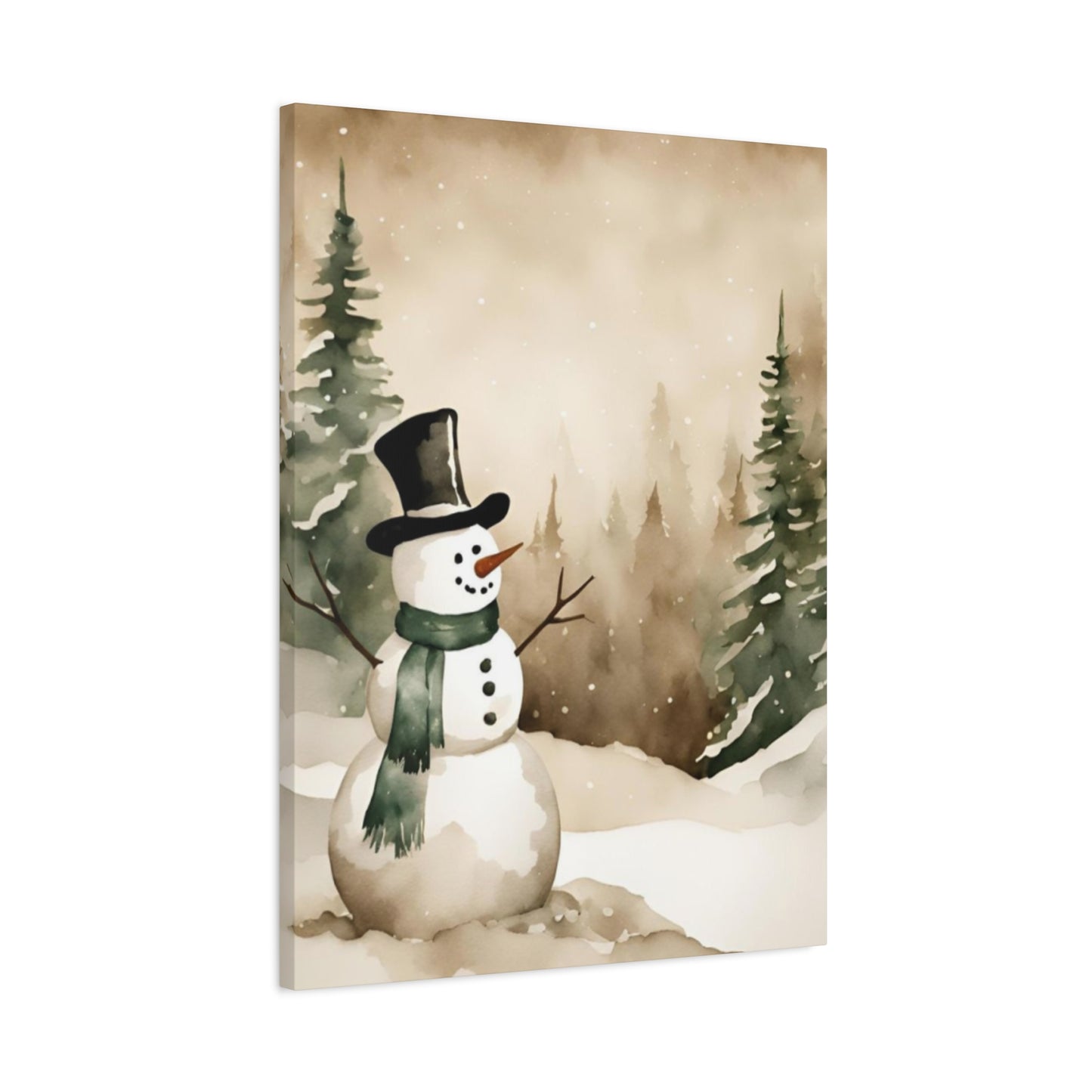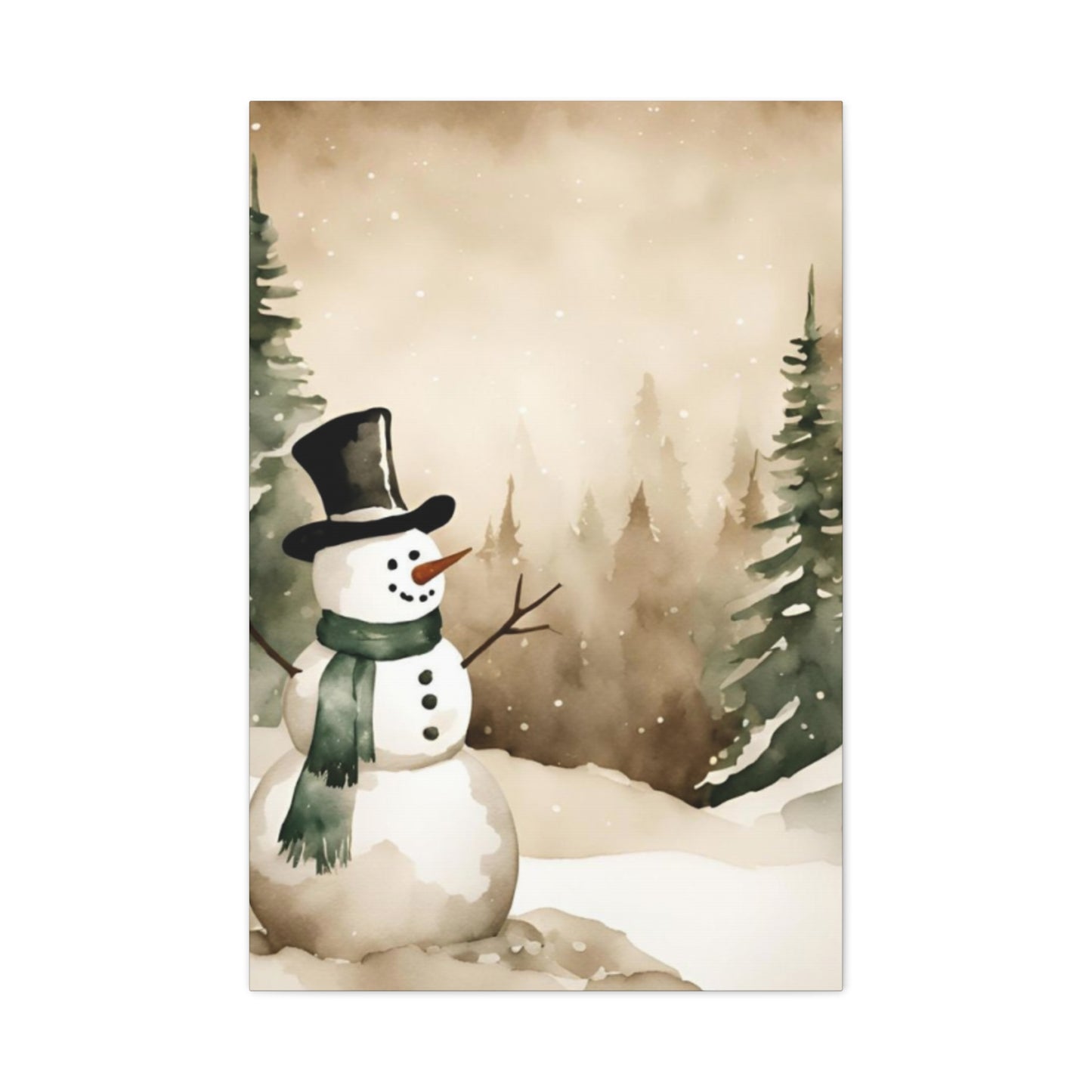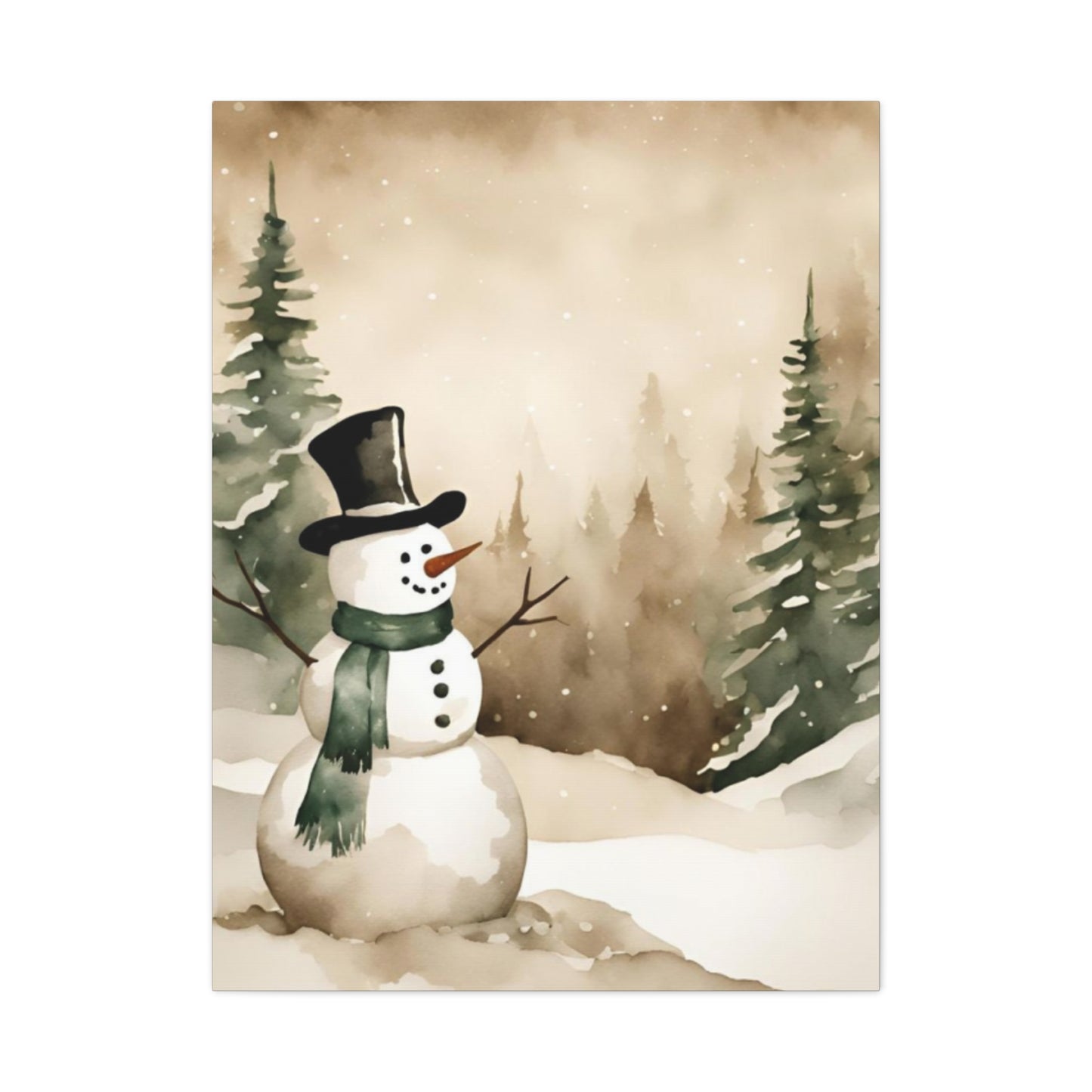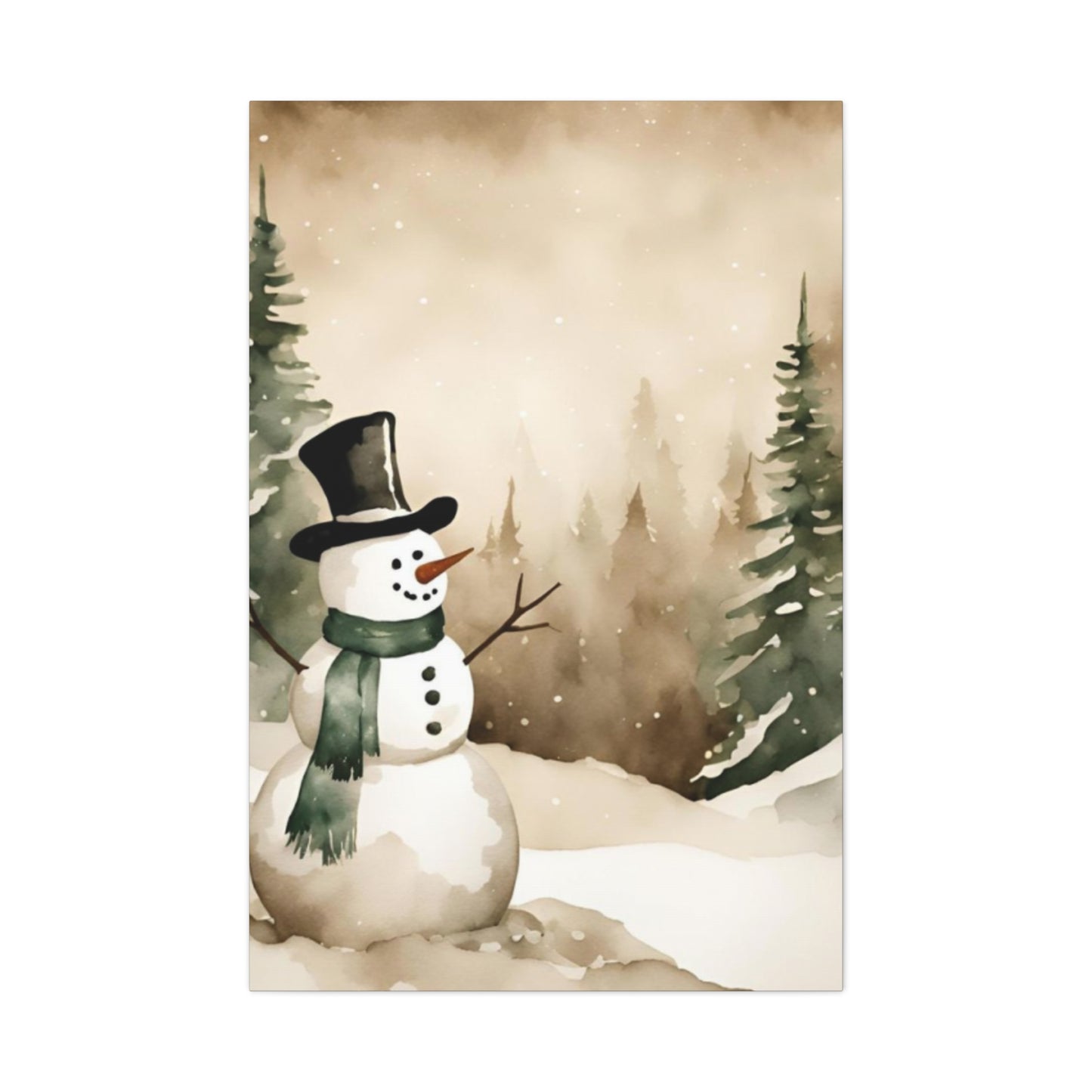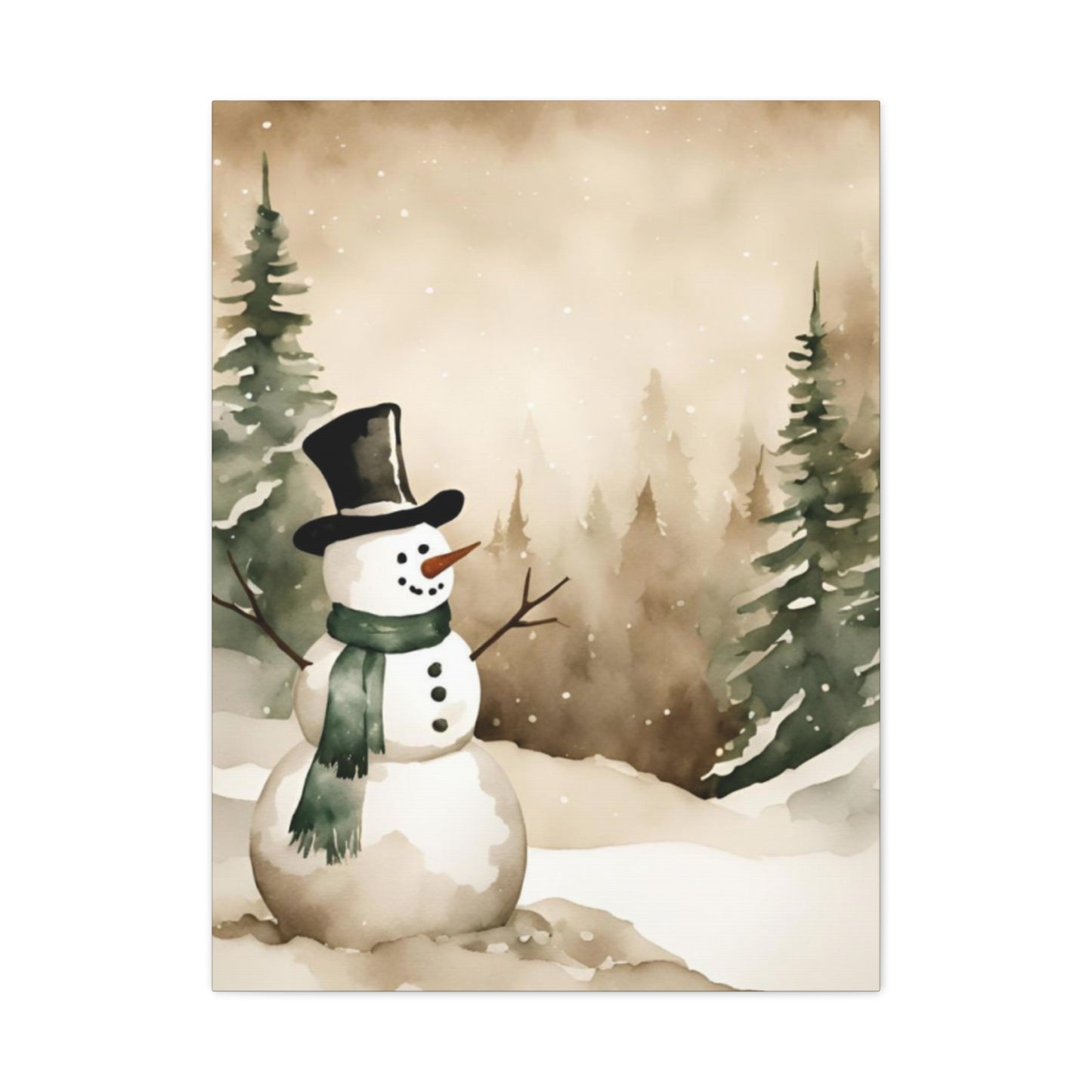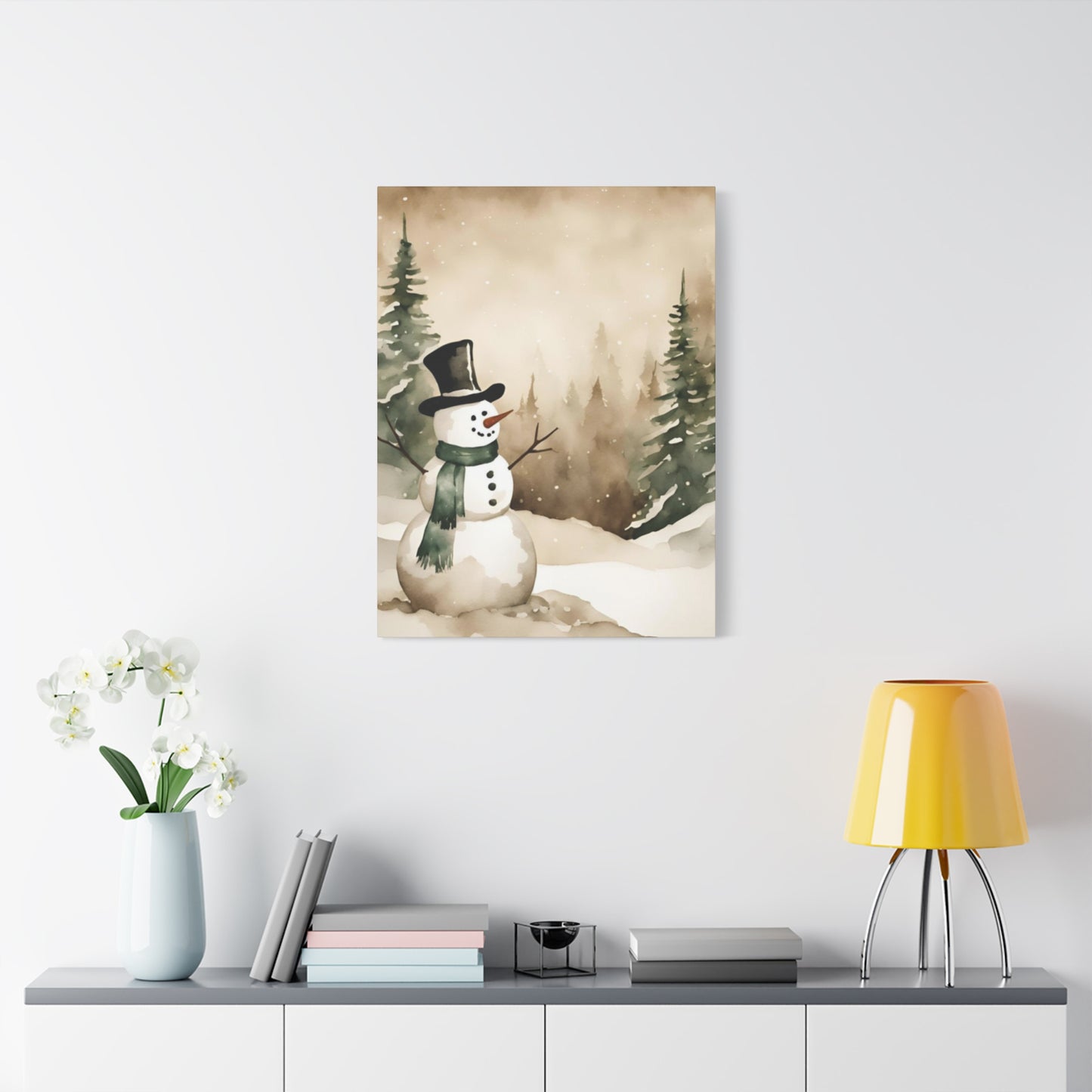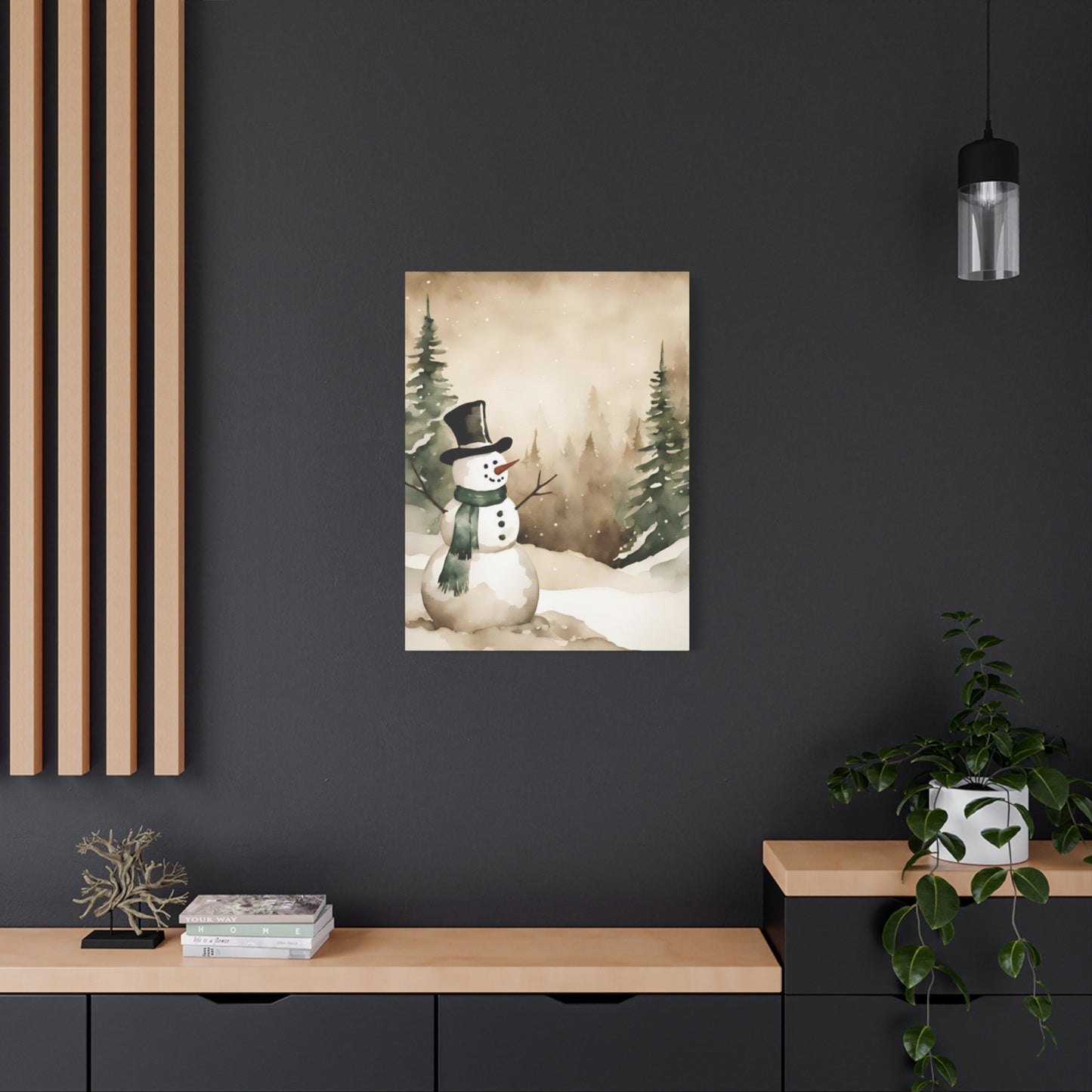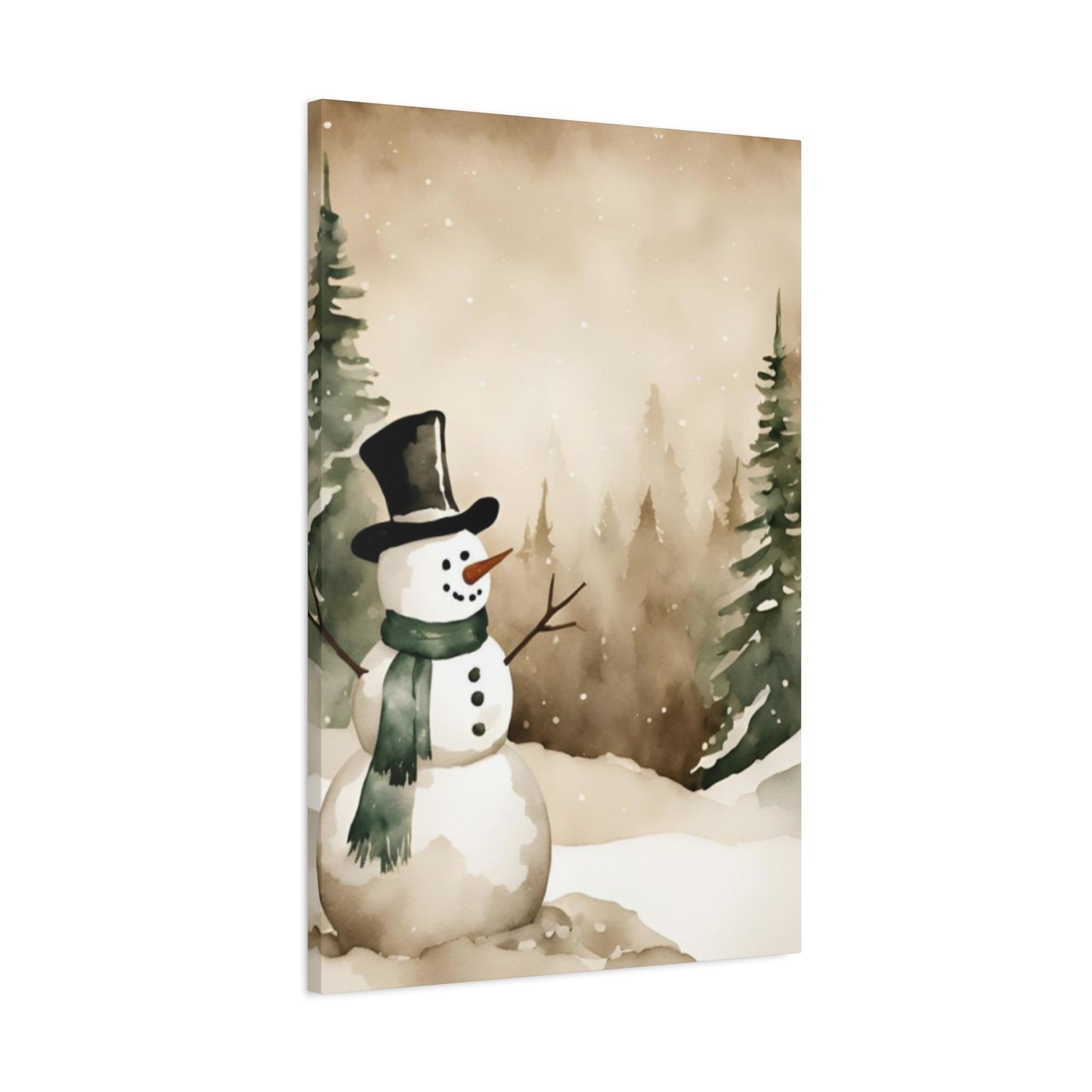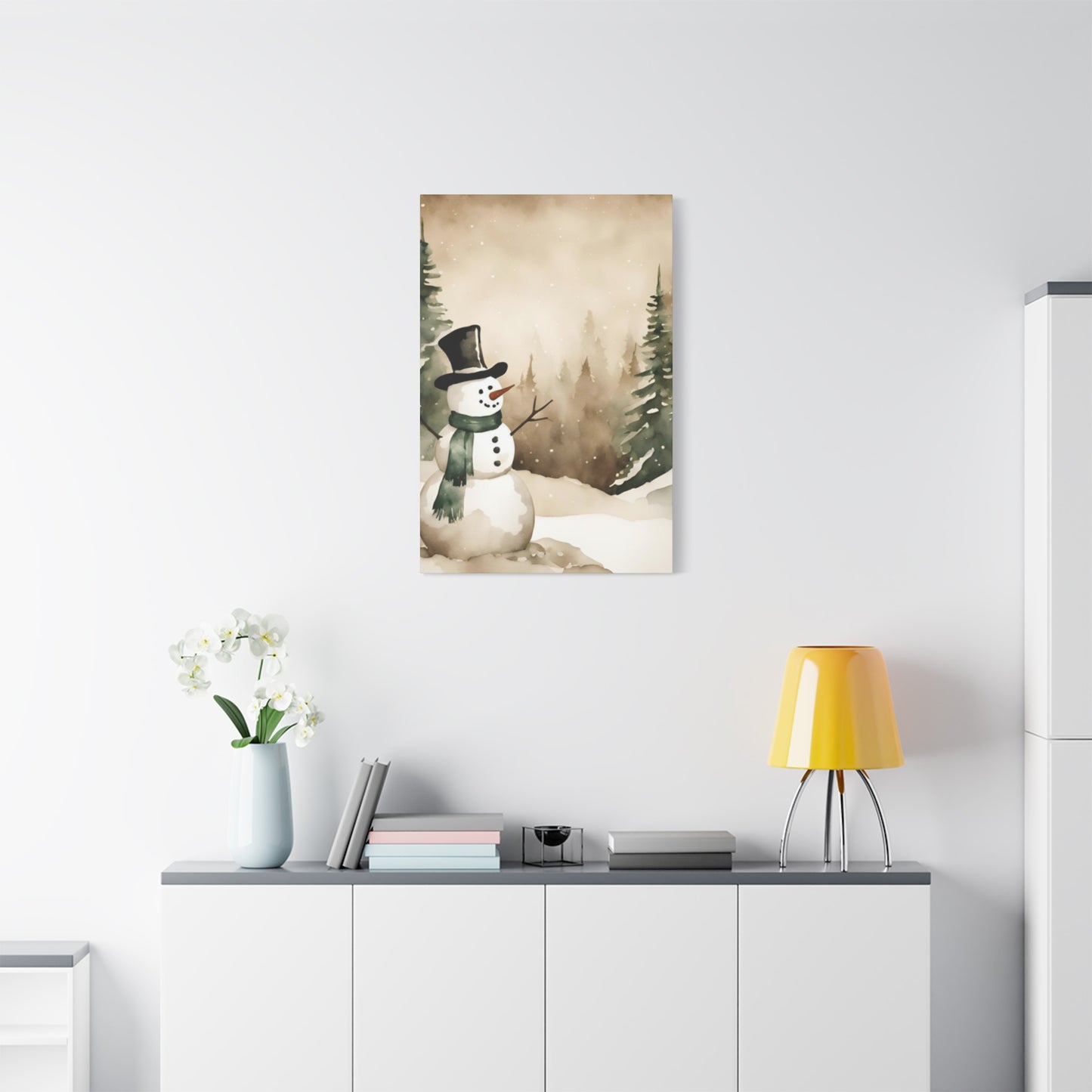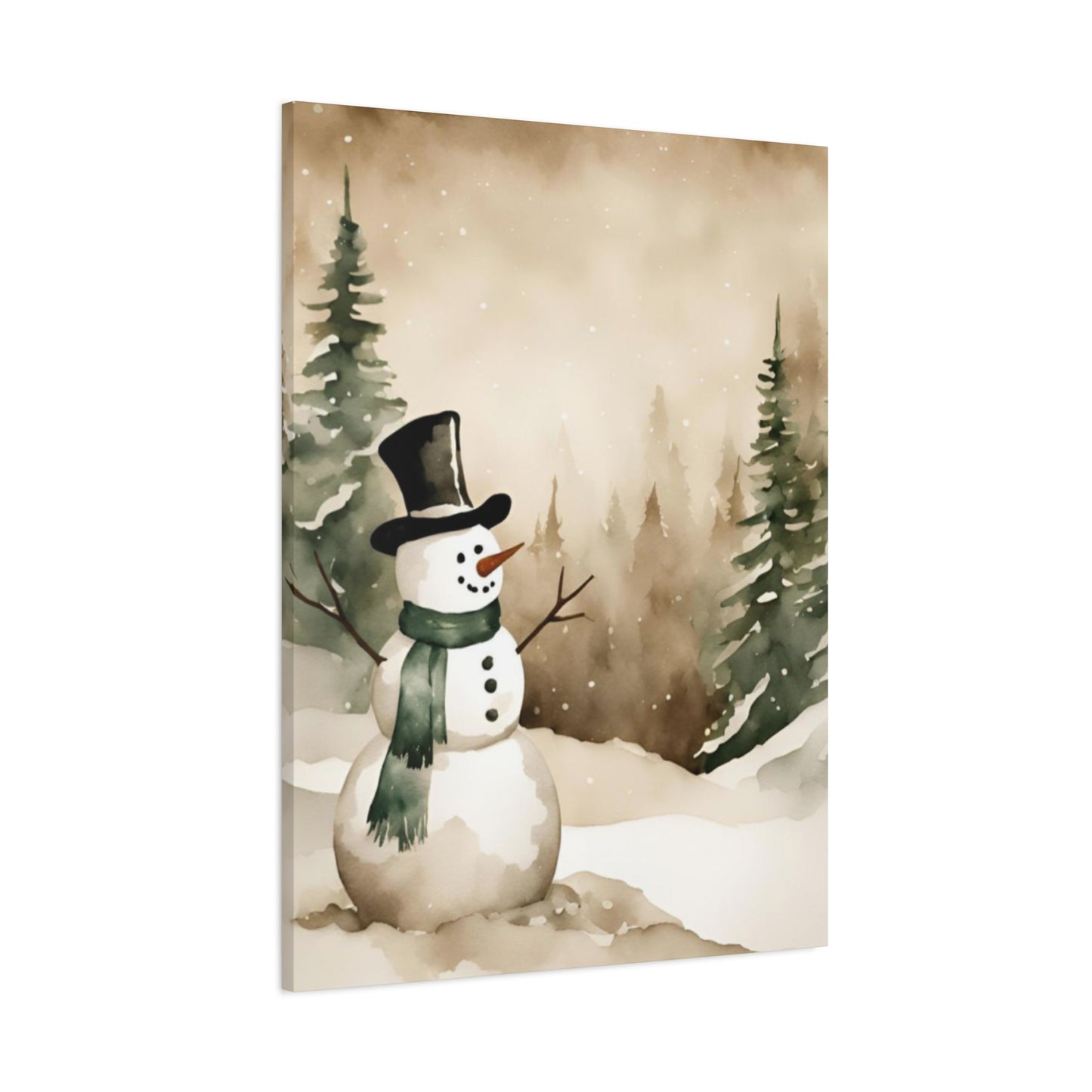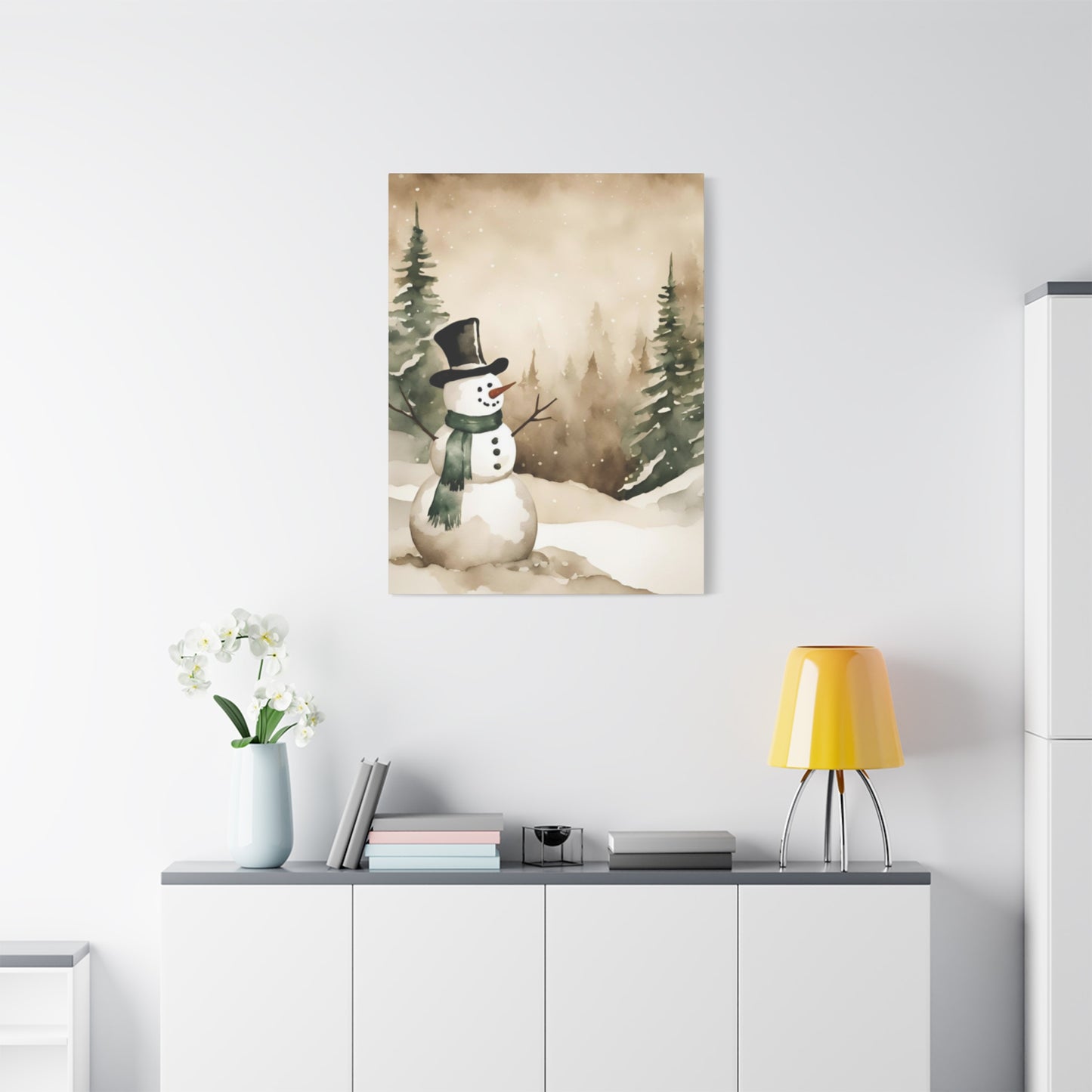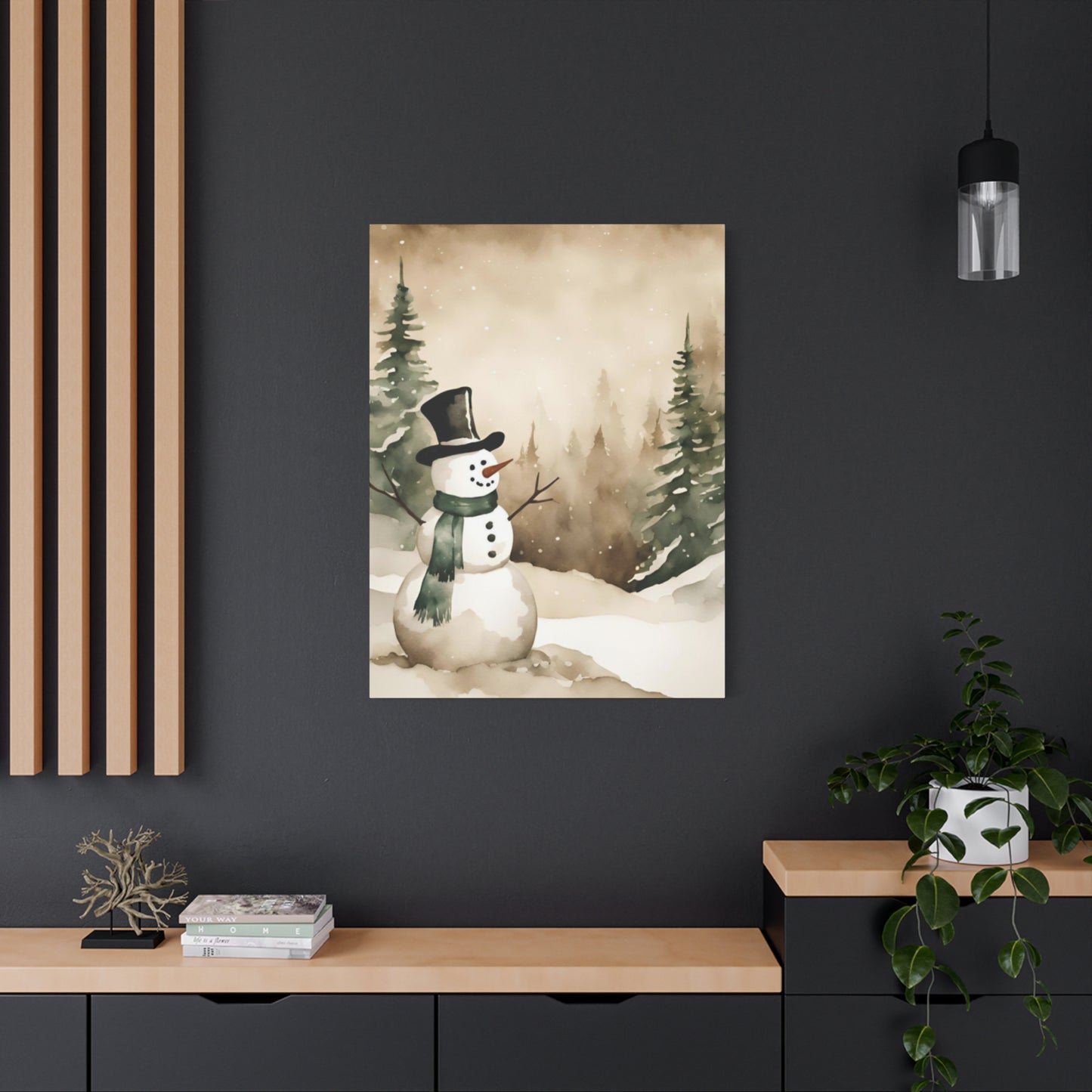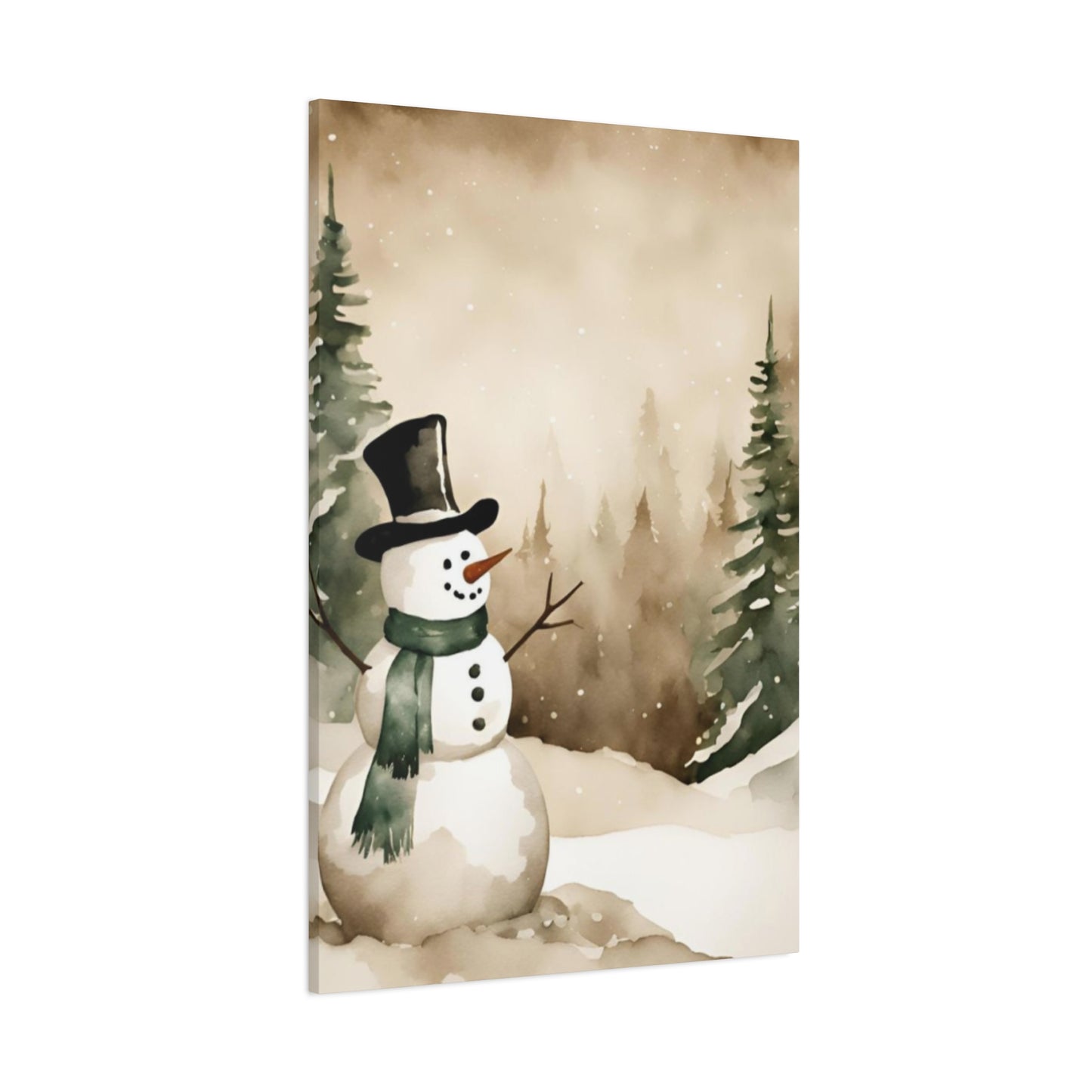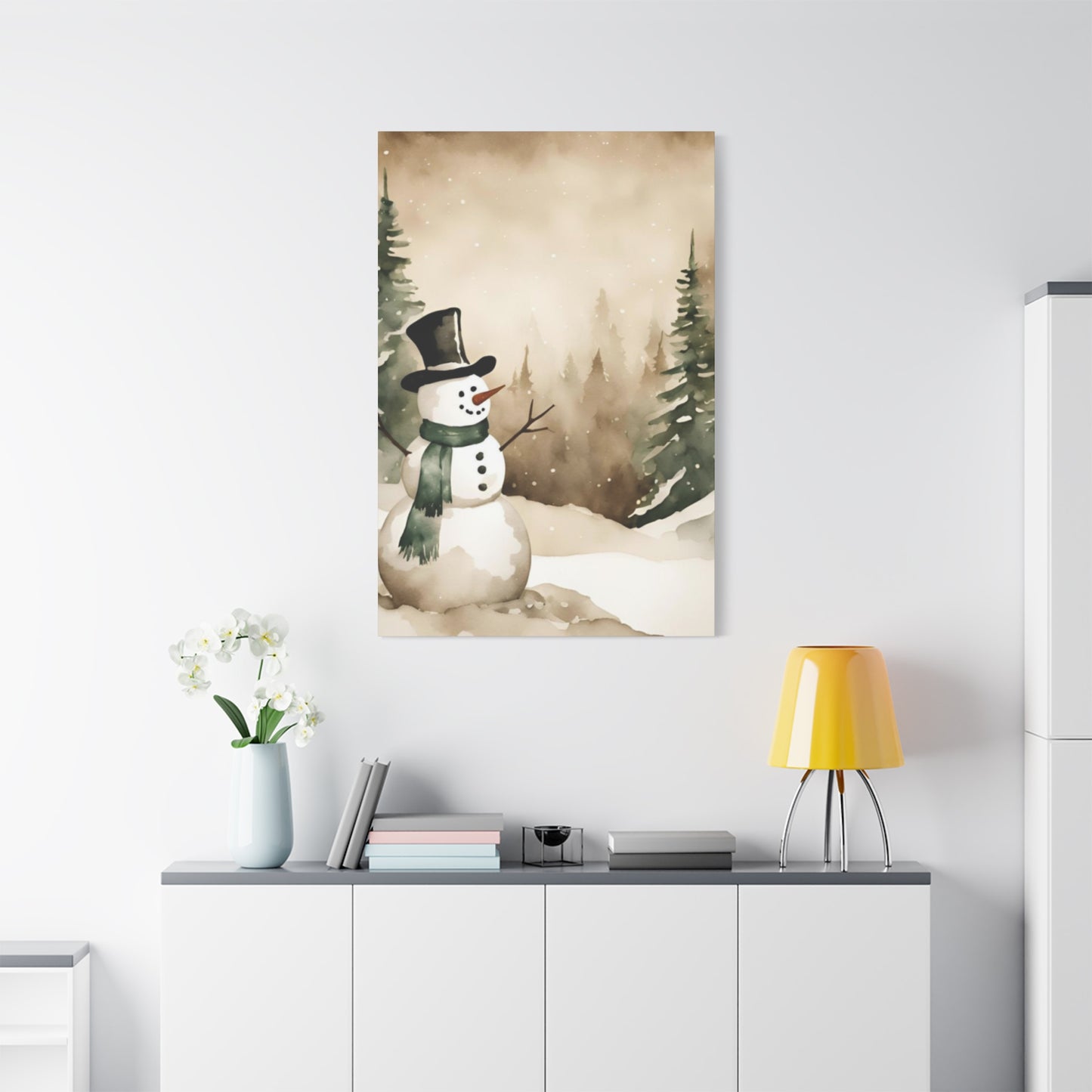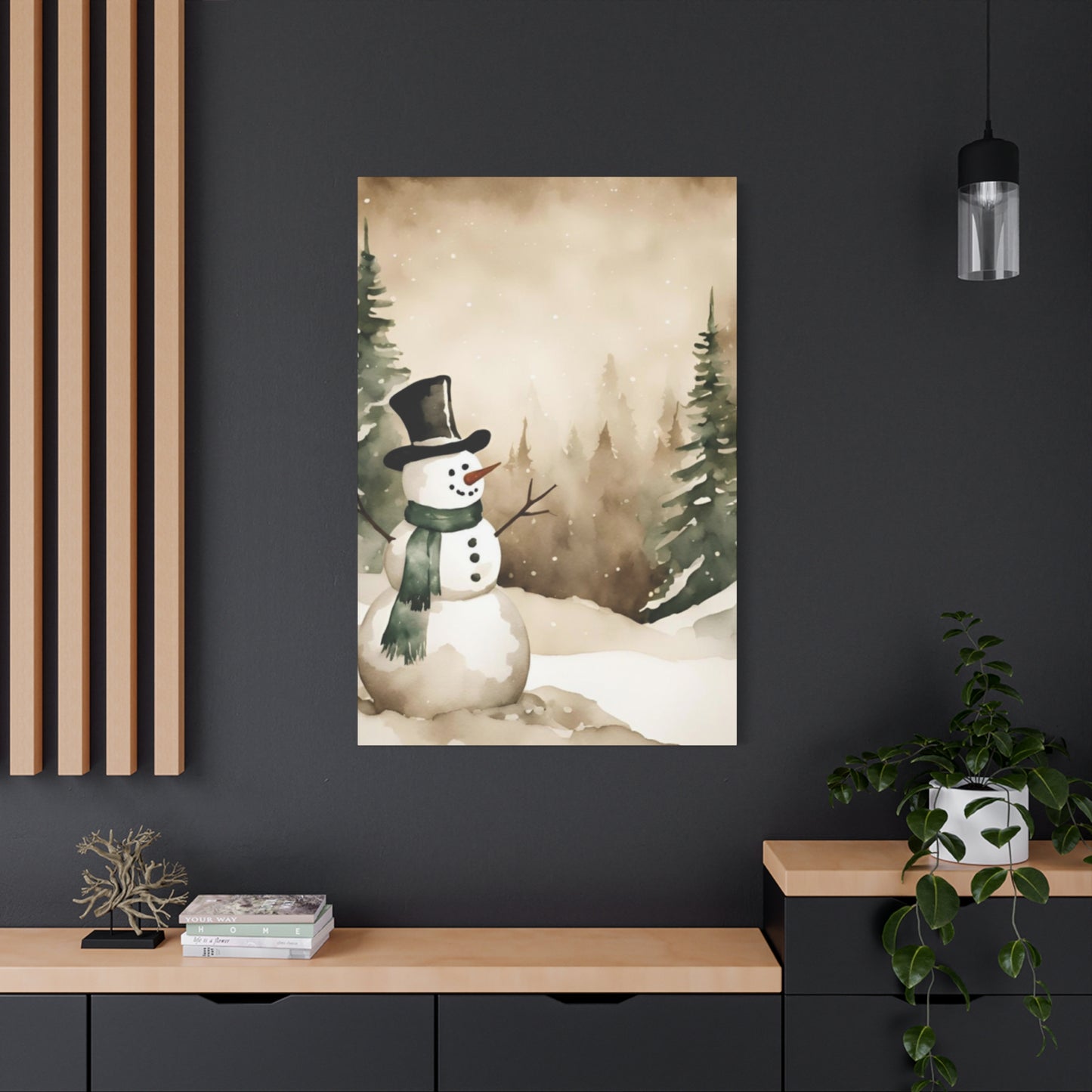Enchanting Snowman Wall Art Collection: Perfect Holiday Decorations for Every Home
The magical charm of snowman-themed artwork has captured hearts across generations, bringing warmth and joy to homes during the winter season and beyond. These delightful decorative pieces transform ordinary walls into enchanting winter wonderlands, creating an atmosphere of nostalgia and festive spirit that resonates with both children and adults alike.
Snowman wall art represents more than just seasonal decoration; it embodies the essence of childhood wonder, family traditions, and the cozy comfort of winter evenings spent by the fireplace. From whimsical cartoon characters to sophisticated artistic interpretations, these pieces offer endless possibilities for personalizing your home environment while celebrating the timeless appeal of these beloved winter figures.
The versatility of snowman-themed artwork extends far beyond traditional holiday displays. Modern homeowners are discovering innovative ways to incorporate these charming pieces into their year-round decor, creating unique focal points that serve as conversation starters and sources of daily joy. Whether you prefer classic three-button snowmen with carrot noses or contemporary abstract interpretations, there's a perfect piece waiting to complement your personal style and home aesthetic.
Contemporary artists have embraced the snowman motif, creating stunning pieces that range from hyperrealistic portraits to avant-garde interpretations that challenge traditional perceptions. These artistic creations demonstrate how a simple concept can be transformed into sophisticated artwork suitable for any home setting, from rustic cabins to modern urban apartments.
Snowman Art for Living Rooms
Living rooms serve as the heart of family gatherings, making them perfect venues for showcasing beautiful snowman artwork that creates a welcoming atmosphere for guests and family members. The key to successfully incorporating these pieces lies in understanding how they interact with existing furniture, color schemes, and architectural elements within the room.
When selecting snowman artwork for your main living area, consider the scale and proportion relative to your furniture arrangement. Large sectional sofas can accommodate substantial pieces that make bold statements, while smaller seating arrangements benefit from carefully curated collections of medium-sized prints or paintings. The viewing distance from primary seating positions should allow guests to appreciate the intricate details and craftsmanship without strain.
Color coordination plays a crucial role in achieving harmonious integration. Traditional snowman artwork featuring white, black, and orange elements pairs beautifully with neutral color palettes, creating a cohesive look that feels intentional rather than seasonal add-ons. However, contemporary interpretations might incorporate vibrant blues, purples, or even warm earth tones that complement existing decor schemes.
The placement height significantly impacts the visual effectiveness of snowman artwork in living areas. Professional designers recommend positioning the center of artwork at eye level when standing, typically around 57-60 inches from the floor. This standard ensures optimal viewing from both seated and standing positions, creating a natural focal point that draws the eye without overwhelming the room's balance.
Lighting considerations enhance the impact of snowman artwork, with strategically placed accent lights highlighting textures and details that might otherwise go unnoticed. Picture lights, track lighting, or even carefully positioned table lamps can create dramatic effects that transform simple prints into captivating centerpieces during evening hours.
The emotional impact of snowman artwork in living areas extends beyond mere decoration, creating psychological associations with comfort, joy, and family bonding. Research suggests that familiar, comforting imagery can reduce stress levels and promote relaxation, making these pieces valuable additions to spaces designed for unwinding and socializing.
Framing Snowman Canvas
Proper framing techniques can elevate snowman canvas artwork from simple decorative pieces to museum-quality displays that command attention and respect. The frame selection process involves considering multiple factors including the artwork's style, the room's existing decor, and the desired visual impact you wish to achieve.
Traditional wood frames offer timeless appeal that complements classic snowman imagery, with options ranging from rustic barnwood finishes that evoke cozy cabin atmospheres to polished hardwood selections that suit formal environments. The grain patterns and wood tones should harmonize with existing furniture pieces, creating visual connections that unify the room's overall aesthetic.
Metal frames provide contemporary alternatives that work particularly well with modern or abstract snowman interpretations. Sleek aluminum or steel options in brushed finishes can create striking contrasts against colorful backgrounds, while ornate metal frames with decorative elements might suit more traditional artistic styles.
The matting selection process requires careful consideration of color relationships and visual proportions. White or cream matting naturally complements snowman imagery while providing neutral backgrounds that won't compete with the artwork itself. However, colored mats in subtle blues, grays, or even seasonal reds can enhance specific elements within the piece while maintaining overall harmony.
Glass protection serves multiple purposes beyond preserving the canvas from dust and moisture. Anti-glare options minimize reflections that can obscure viewing from certain angles, while UV-protective varieties help prevent fading caused by prolonged exposure to natural or artificial light sources.
Professional framing techniques ensure longevity and proper presentation, with acid-free materials preventing deterioration over time. The mounting process should allow for natural expansion and contraction of canvas materials while maintaining proper tension and alignment within the frame structure.
Custom framing options allow for personalized touches that reflect individual tastes and complement specific room requirements. Hand-carved details, specialty finishes, or unique proportions can transform standard pieces into one-of-a-kind displays that serve as focal points within any environment.
Abstract Snowman Art
Abstract interpretations of snowman themes push creative boundaries while maintaining the essential charm and recognition factors that make these pieces so appealing. Contemporary artists explore geometric forms, color field techniques, and mixed media approaches to create sophisticated pieces that transcend traditional seasonal categories.
Geometric abstraction transforms the classic three-circle snowman silhouette into dynamic compositions using shapes, lines, and color relationships. These pieces might feature overlapping circles in various sizes and opacity levels, creating depth and movement that suggests the familiar form without literal representation. The mathematical precision of geometric approaches appeals to viewers who appreciate structured artistic concepts.
Color field abstractions use large areas of color to evoke the essence of winter and snowman imagery without relying on recognizable forms. Subtle gradations from white through various blue tones might suggest snowy landscapes, while strategic placement of orange or black elements hints at traditional snowman features without explicit depiction.
Expressionistic approaches emphasize emotional content over representational accuracy, using bold brushstrokes, dynamic color relationships, and energetic compositions to capture the joy and whimsy associated with snowmen. These pieces might feature vibrant, unexpected color combinations that challenge conventional expectations while maintaining the playful spirit of the subject matter.
Mixed media techniques combine traditional painting methods with collage elements, textural materials, or digital components to create multi-dimensional pieces that engage viewers on multiple sensory levels. Fabric elements might suggest scarves or clothing, while reflective materials could represent ice or snow crystals.
The psychological impact of abstract snowman art differs significantly from realistic representations, engaging viewers' imagination and interpretation skills rather than providing immediate recognition. This quality makes these pieces excellent conversation starters and allows for personal connections that evolve over time as viewers discover new elements or interpretations.
Scale considerations become particularly important with abstract pieces, as the lack of realistic reference points can make size relationships more challenging to predict. Large-scale abstractions can create dramatic focal points, while smaller pieces work well in groupings or as accent elements within larger display arrangements.
Snowman Art with Lights
Illuminated snowman artwork represents an innovative fusion of traditional artistic display and modern lighting technology, creating dynamic pieces that transform throughout the day and evening hours. These specialized installations combine visual appeal with functional illumination, serving dual purposes as artwork and ambient lighting sources.
LED integration techniques allow artists and manufacturers to embed energy-efficient lighting systems directly into artwork compositions. These lights can highlight specific elements, create atmospheric glowing effects, or even change colors to match seasonal preferences or room moods. The low heat output and extended lifespan of LED technology make these installations practical for long-term display.
Battery-powered options provide flexibility in placement without requiring proximity to electrical outlets. Modern rechargeable systems can operate for extended periods between charging cycles, making them suitable for locations where wired connections would be impractical or unsightly. Solar-powered variants offer environmentally friendly alternatives for outdoor installations.
Smart home integration capabilities allow illuminated snowman art to respond to voice commands, smartphone apps, or automated schedules. These systems can coordinate with existing home automation networks, adjusting brightness levels or color schemes based on time of day, occupancy sensors, or user preferences.
The layering of light effects creates depth and visual interest that static pieces cannot achieve. Backlighting techniques can create silhouette effects that emphasize form and shape, while front lighting reveals colors and details with dramatic clarity. Multiple light sources within single pieces allow for complex lighting scenarios that change the artwork's character throughout different viewing periods.
Safety considerations become paramount when combining electricity with artwork, requiring proper insulation, weather sealing for outdoor applications, and compliance with electrical codes. Professional installation might be necessary for permanently mounted pieces or those requiring direct electrical connections.
Maintenance requirements for illuminated pieces include regular cleaning of light sources to maintain brightness levels and periodic replacement of components as they reach end-of-life cycles. The accessibility of replaceable elements should be considered during initial installation to minimize future service difficulties.
Office Snowman Decor
Professional environments benefit from carefully selected snowman artwork that maintains appropriate workplace atmosphere while introducing elements of personality and seasonal warmth. The challenge lies in balancing professional appearance with the inherently playful nature of snowman imagery.
Scale and placement considerations in office environments require sensitivity to the functional requirements of work activities. Pieces should complement rather than distract from productivity, with sizes and positions that allow for clear sight lines and unobstructed access to work areas. Reception areas and common gathering locations often provide ideal venues for more prominent displays.
Color palette selection becomes crucial in maintaining professional appearance while incorporating snowman themes. Monochromatic or limited color schemes tend to integrate more successfully in business environments, with sophisticated interpretations that suggest rather than explicitly depict traditional snowman characteristics.
The psychological benefits of workplace art include stress reduction, improved mood, and enhanced creativity levels among employees and visitors. Snowman imagery specifically evokes positive associations with childhood memories and seasonal celebrations, contributing to more pleasant work atmospheres during potentially stressful winter months.
Client and visitor considerations should influence artwork selection, as pieces will be viewed by individuals with diverse cultural backgrounds and artistic preferences. Classic, universally appealing interpretations tend to create positive impressions while avoiding potential controversial or distracting elements.
Durability requirements in office environments include resistance to frequent cleaning, stable mounting systems that won't shift over time, and materials that maintain appearance despite exposure to artificial lighting and climate control systems. Commercial-grade framing and mounting hardware ensure long-term stability and professional appearance.
Seasonal rotation strategies allow offices to maintain fresh, current displays while maximizing the investment in artwork collections. Storage solutions for off-season pieces should protect artwork while maintaining easy access for future installations.
Snowman Prints Outdoors
Exterior snowman artwork faces unique challenges related to weather resistance, UV exposure, and temperature fluctuations while providing opportunities to extend festive themes beyond indoor environments. Specialized materials and mounting techniques ensure longevity and continued visual appeal despite harsh environmental conditions.
Weather-resistant materials form the foundation of successful outdoor displays, with aluminum substrates, marine-grade inks, and specialized protective coatings providing protection against moisture, temperature extremes, and UV degradation. These materials maintain color integrity and structural stability through multiple seasonal cycles.
Mounting system requirements exceed those of indoor installations, requiring corrosion-resistant hardware and secure attachment methods that can withstand wind loads and thermal expansion cycles. Stainless steel fasteners, weatherproof sealants, and properly engineered mounting brackets ensure safe, long-term installation.
Drainage considerations prevent water accumulation that could lead to damage or mounting system failure. Proper design includes adequate clearance from ground level, angled mounting to encourage water runoff, and sealed edges that prevent moisture infiltration behind the artwork surface.
Seasonal maintenance schedules help preserve appearance and functionality throughout extended outdoor exposure periods. Regular cleaning removes accumulated dirt and debris, while periodic inspection of mounting hardware and protective coatings identifies potential issues before they compromise the installation.
Design considerations for outdoor viewing include increased scale requirements to maintain visual impact at greater viewing distances and enhanced color contrast to ensure visibility under varying lighting conditions. Bold, simplified compositions often perform better in outdoor environments than intricate detailed pieces.
Integration with landscape elements creates cohesive outdoor design schemes that incorporate snowman artwork as functional components of larger decorative concepts. Strategic placement near walkways, entryways, or gathering areas maximizes exposure while ensuring safe pedestrian traffic flow.
Snowy Background Snowman
Artwork featuring snowmen against snowy backgrounds creates immersive winter scenes that transport viewers into magical seasonal landscapes. These compositions require careful attention to contrast, depth, and atmospheric perspective to achieve convincing and visually compelling results.
Contrast management becomes critical when working with predominantly white palettes, requiring subtle tonal variations to distinguish between snowman figures and background elements. Artists employ various techniques including warm and cool color temperature shifts, shadow definition, and texture variations to create necessary visual separation.
Atmospheric perspective principles help establish depth and distance within snowy compositions, with background elements appearing lighter, less detailed, and cooler in color temperature compared to foreground subjects. This technique creates the illusion of vast winter landscapes extending beyond the picture plane.
Texture representation distinguishes between different types of snow and ice surfaces, from fluffy fresh powder to wind-packed drifts and crystalline ice formations. Various artistic techniques including dry brushing, stippling, and palette knife application create convincing surface qualities that enhance the overall realism.
Lighting scenarios significantly impact the mood and visual effectiveness of snowy background compositions. Bright, even illumination suggests midday winter sunshine, while dramatic side lighting creates long shadows and enhanced dimensional effects. Overcast conditions produce soft, diffused lighting that minimizes harsh contrasts.
Seasonal timing implications affect the accuracy and authenticity of snowy background depictions, with artists considering factors such as bare tree branches, wildlife activity, and human interaction appropriate to specific winter periods. These details enhance the believability and emotional connection of the artwork.
Color temperature considerations ensure visual harmony between snowman subjects and their snowy environments. Cool blue and purple undertones in shadow areas contrast effectively with warm highlights, while reflected light from snow surfaces can introduce subtle color variations throughout the composition.
Large Snowman Canvas
Substantial snowman artwork serves as commanding focal points that can transform entire rooms through their impressive scale and visual impact. These pieces require careful planning regarding placement, viewing distances, and integration with existing architectural elements.
Proportional relationships become crucial when selecting large-scale pieces, with artwork dimensions coordinating with wall dimensions, ceiling heights, and furniture arrangements to maintain visual balance. Oversized pieces can overwhelm smaller rooms, while undersized selections may appear lost on expansive wall surfaces.
Installation requirements for large canvas pieces often exceed standard hanging methods, requiring specialized hardware rated for increased weight loads and proper wall anchor systems. Professional installation ensures safety while protecting both artwork and wall surfaces from damage during mounting processes.
Visual impact strategies take advantage of the commanding presence large pieces naturally possess, using bold compositions, dramatic color contrasts, or intricate detail work that rewards close examination. The increased surface area allows for complex storytelling elements or multiple focal points within single compositions.
Room integration considerations ensure large snowman artwork enhances rather than dominates living environments. Strategic placement opposite main seating areas creates natural focal points, while positioning adjacent to architectural features like fireplaces or built-in shelving creates unified design elements.
Viewing angle optimization accounts for the various positions from which large pieces will be observed, ensuring compositions remain visually effective from multiple perspectives. This consideration affects both horizontal placement height and the internal composition structure of the artwork itself.
Transportation and handling requirements for large pieces may necessitate special delivery arrangements and careful maneuvering through doorways and around corners. These practical considerations should be addressed before purchase to avoid installation difficulties.
Small Snowman Prints
Compact snowman artwork offers versatility and affordability while providing opportunities for creative grouping arrangements and intimate display concepts. These pieces excel in applications where subtle accent elements are preferred over dominant focal points.
Grouping strategies maximize the visual impact of small pieces through thoughtful arrangement patterns. Gallery wall concepts combine multiple small prints to create larger unified displays, while strategic spacing and alignment create professional appearance. Odd-numbered groupings typically create more dynamic visual interest than even-numbered arrangements.
Detail appreciation becomes particularly important with small-scale pieces, as viewers can examine intricate elements more closely. Artists often incorporate fine details, subtle color variations, and sophisticated techniques that reward careful observation and create lasting interest.
Placement flexibility allows small snowman prints to succeed in locations where larger pieces would be impractical, including narrow hallways, powder rooms, office cubicles, or alongside larger artwork as complementary elements. This versatility makes them valuable components of comprehensive decorating schemes.
Budget considerations make small prints accessible to collectors with limited resources while allowing for gradual collection building over time. Multiple small pieces can be acquired progressively, creating evolving displays that reflect changing tastes and seasonal preferences.
Framing options for small pieces range from simple mat and frame combinations to more elaborate treatments that enhance the perceived value and visual impact. Uniform framing creates cohesive collections, while varied frame styles can add visual interest and personality to groupings.
Seasonal rotation becomes practical with small pieces, allowing for easy storage and periodic display changes that keep interior environments fresh and current. Storage requirements are minimal, making it feasible to maintain larger collections than would be possible with full-size artwork.
Snowman Mixed Media
Mixed media approaches to snowman artwork combine various materials, techniques, and artistic disciplines to create unique pieces that engage multiple senses and offer rich textural experiences. These innovative creations push beyond traditional painting boundaries while maintaining the charm and appeal of snowman subjects.
Material combination strategies might incorporate fabric elements suggesting winter clothing, metallic components representing buttons or accessories, natural materials like twigs for arms, or reflective elements simulating ice and snow. The key lies in achieving harmonious integration that enhances rather than overwhelms the central snowman theme.
Dimensional elements add sculptural qualities to traditionally flat artwork, with raised surfaces, layered components, or attached objects creating shadow patterns and tactile interest. These features invite closer examination and provide changing visual experiences as lighting conditions shift throughout the day.
Collage techniques integrate photographic elements, paper materials, or printed components into painted or drawn backgrounds. Historical photographs, vintage postcards, or printed text can add narrative layers and personal connections that resonate with individual viewers' experiences and memories.
Digital integration allows for hybrid creations combining traditional artistic methods with computer-generated elements, printed photographs, or electronically manipulated images. These contemporary approaches reflect modern technological capabilities while maintaining connection to traditional snowman imagery.
Texture variation across different material components creates visual and tactile interest that static paintings cannot achieve. Rough fabric textures contrast with smooth painted areas, while metallic elements provide reflective qualities that change as viewers move around the piece.
Conservation considerations become more complex with mixed media pieces, as different materials may have varying preservation requirements and lifespans. Professional conservation advice may be necessary for valuable pieces or those incorporating unusual materials.
Popular Snowman Artists
The world of snowman-themed artwork encompasses both established artists who have achieved recognition for their contributions to this specialized genre and emerging talents who bring fresh perspectives to traditional themes. Understanding these creative voices helps collectors and enthusiasts appreciate the artistic evolution and continuing relevance of snowman imagery.
Contemporary artists working in this field often combine traditional subject matter with modern techniques and perspectives, creating pieces that appeal to both nostalgic sensibilities and current aesthetic preferences. Their work demonstrates how timeless themes can be reinterpreted for modern audiences while maintaining essential charm and appeal.
Folk art traditions have produced numerous artists whose naive or primitive styles perfectly capture the innocent joy associated with snowmen. These creators often work in rural or small-town environments where winter traditions remain strong, bringing authentic seasonal experiences to their artistic interpretations.
Commercial illustrators specializing in winter and holiday themes have contributed significantly to popular snowman imagery, creating iconic representations that appear on greeting cards, decorative items, and licensed merchandise. Their influence extends far beyond fine art into popular culture and mass market applications.
Regional artistic movements sometimes develop around snowman themes in areas with significant winter seasons, where these figures hold particular cultural significance. Artists from these regions often bring unique perspectives shaped by personal experiences with actual snow and winter conditions.
Gallery representation for snowman-themed artists varies widely, with some working primarily in commercial markets while others achieve fine art gallery recognition. The crossover appeal of snowman subjects allows artists to reach diverse audiences ranging from casual decorators to serious collectors.
Educational backgrounds of successful snowman artists demonstrate diverse paths to artistic achievement, from formally trained fine artists to self-taught folk artists whose authentic personal vision resonates with audiences. This diversity enriches the field and provides varied approaches to common themes.
Snowman Art for Holidays
Seasonal celebrations provide natural opportunities for featuring snowman artwork as central elements of holiday decorating schemes. These pieces contribute to festive atmospheres while offering flexibility for year-round display in many cases.
Christmas integration strategies position snowman art alongside traditional holiday symbols like Santa Claus, reindeer, and Christmas trees, creating comprehensive seasonal displays. The secular nature of snowman imagery makes these pieces particularly valuable for inclusive celebrations that welcome diverse cultural backgrounds.
Winter solstice celebrations in many cultures embrace snowman symbolism as representations of seasonal transformation and the cyclical nature of yearly patterns. These connections add deeper meaning to decorative displays while acknowledging ancient traditions that predate modern commercial holidays.
New Year festivities often feature snowman imagery as symbols of fresh starts and winter renewal, with the temporary nature of actual snowmen serving as metaphors for the passage of time and the opportunity for new beginnings that each year provides.
Valentine's Day applications demonstrate the versatility of snowman themes, with romantic interpretations featuring couples or family groups that celebrate love and togetherness during the winter season. Heart-shaped elements or warm color accents can adapt traditional snowman imagery to romantic themes.
Easter transitions present creative challenges for maintaining snowman displays as spring approaches, with artists sometimes creating pieces that suggest melting or transformation themes that acknowledge seasonal change while maintaining decorative appeal.
Storage and rotation systems help manage holiday-specific pieces efficiently, ensuring artwork remains in good condition during off-seasons while providing easy access for annual installations. Proper storage prevents damage while maintaining the excitement of rediscovering favorite pieces each year.
Pairing Snowman with Trees
The combination of snowman figures and tree elements creates compelling compositional relationships that enhance both subjects while suggesting natural winter environments. These pairings offer opportunities for storytelling and environmental context that isolated snowman figures cannot achieve.
Evergreen trees provide classic companions for snowman subjects, with their persistent foliage creating year-round relevance while suggesting traditional winter landscape settings. The geometric forms of coniferous trees contrast effectively with the rounded shapes of snowmen, creating dynamic visual relationships.
Bare deciduous trees offer different aesthetic qualities, with their skeletal branch structures creating intricate linear patterns against simple snowman forms. These combinations suggest the dormant period of winter while creating opportunities for detailed artistic expression in branch and twig rendering.
Scale relationships between trees and snowmen can dramatically affect compositional impact and narrative suggestions. Towering trees that dwarf snowman figures create sense of vast winter landscapes, while smaller trees positioned at similar scales suggest intimate garden or yard settings.
Seasonal progression themes allow artists to explore temporal relationships between trees and snowmen, perhaps showing autumn leaves falling around newly formed snow figures or spring buds emerging as snowmen begin to melt. These narratives add emotional depth and temporal context.
Background and foreground positioning strategies determine which elements receive primary attention while establishing spatial depth within compositions. Snowmen positioned in front of tree groupings become clear focal points, while figures nestled among trees create more integrated, naturalistic scenes.
Color harmony considerations ensure effective integration between tree and snowman elements, with artists often using limited palettes that emphasize the natural color relationships found in actual winter environments. Warm and cool color temperature contrasts enhance visual interest without disrupting overall unity.
Snowman Canvas Care
Proper maintenance and care procedures ensure snowman canvas artwork retains its beauty and structural integrity throughout years of display and storage. Understanding appropriate cleaning methods, environmental requirements, and handling techniques protects these investments while preserving their decorative and emotional value.
Cleaning procedures for canvas artwork require gentle approaches that remove accumulated dust and debris without damaging paint surfaces or canvas fibers. Soft brush techniques using clean, dry brushes work effectively for routine maintenance, while professional cleaning may be necessary for more substantial contamination.
Environmental control factors significantly impact canvas longevity, with temperature and humidity fluctuations causing expansion and contraction cycles that can stress paint layers and canvas supports. Ideal conditions maintain relatively stable temperature and humidity levels while avoiding extreme variations.
Light exposure management prevents fading and deterioration caused by ultraviolet radiation from both natural sunlight and artificial lighting sources. UV-filtering glazing, strategic placement away from direct sunlight, and controlled artificial lighting help preserve original colors and prevent premature aging.
Handling protocols minimize physical damage during movement, storage, and installation procedures. Proper lifting techniques, protective wrapping materials, and secure storage methods prevent tears, punctures, and other mechanical damage that can permanently compromise artwork integrity.
Storage solutions for seasonal pieces protect artwork during periods of non-display while maintaining easy access for future installations. Flat storage prevents warping and stretching, while protective materials prevent contact damage and environmental contamination during storage periods.
Professional conservation services become necessary when damage occurs or when valuable pieces require specialized attention. Early intervention often prevents minor problems from developing into major restoration challenges, making periodic professional assessment worthwhile for important pieces.
Snowman Prints for Bedrooms
Bedroom applications for snowman artwork require sensitivity to the personal, restful nature of these private environments while capitalizing on the comforting, nostalgic qualities that snowman imagery naturally provides. These pieces can contribute to peaceful, welcoming atmospheres that promote relaxation and pleasant dreams.
Color psychology considerations influence artwork selection for bedroom environments, with softer, more muted palettes generally proving more conducive to rest and relaxation. Gentle pastels, monochromatic schemes, or limited color ranges create calming effects that complement the bedroom's primary function.
Placement strategies in bedrooms account for viewing angles from beds, seating areas, and entry points while ensuring artwork doesn't create overwhelming visual stimulation that might interfere with sleep preparation. Positioning opposite the foot of beds creates pleasant viewing from resting positions without being directly in sight lines during sleep.
Size appropriateness ensures snowman prints complement rather than dominate bedroom environments, with scale selections that provide visual interest without overwhelming the intimate nature of these personal areas. Medium-sized pieces or small groupings often work better than large statement pieces in bedroom applications.
Theme coordination with existing bedroom decor creates cohesive environments that feel intentionally designed rather than randomly decorated. Snowman artwork can complement winter themes, childhood nostalgia concepts, or seasonal rotation schemes that keep bedroom environments fresh and current.
Romantic considerations for shared bedrooms ensure snowman artwork appeals to both occupants while maintaining appropriate atmosphere for intimate environments. Subtle, sophisticated interpretations often work better than overtly childlike or cartoonish versions in adult bedroom settings.
Lighting compatibility ensures artwork remains visible and appealing under various bedroom lighting scenarios, from bright morning natural light to soft evening artificial illumination. This consideration affects both artwork selection and placement decisions within bedroom layouts.
Snowman and Reindeer Art
The pairing of snowmen with reindeer creates magical winter compositions that combine two beloved seasonal symbols into compelling artistic narratives. These combinations offer rich storytelling opportunities while appealing to audiences who cherish traditional holiday imagery and winter folklore.
Mythological connections between reindeer and winter celebrations provide cultural context that enhances the appeal of combined compositions. The association with Santa's sleigh team adds narrative layers that resonate with viewers familiar with Christmas traditions, while the natural winter habitat of reindeer creates logical environmental connections.
Compositional balance between snowman and reindeer elements requires careful consideration of size relationships, positioning, and visual weight distribution. Neither element should completely dominate the composition, with successful pieces achieving harmony that allows both subjects to contribute to the overall artistic impact.
Movement dynamics can distinguish reindeer from static snowman figures, with artists often depicting reindeer in active poses that suggest motion and energy while snowmen maintain their characteristic stable, grounded presence. This contrast creates visual interest and suggests interaction between the subjects.
Environmental settings that accommodate both snowmen and reindeer typically feature winter landscapes with sufficient detail to support narrative interpretation. Snowy meadows, forest clearings, or village scenes provide appropriate backdrops that enhance the believability of combined compositions.
Color relationships between subjects help unify compositions while maintaining individual character for each element. Earth tones and natural colors associated with reindeer can complement the traditional white, black, and orange palette of snowmen while maintaining distinct identity for both subjects.
Seasonal timing implications ensure artistic accuracy regarding when and where reindeer and snowmen might naturally coexist, adding authenticity to combined compositions while respecting the natural behaviors and habitats of actual reindeer populations.
Minimalist Snowman Prints
Contemporary minimalist approaches to snowman artwork strip away unnecessary elements while retaining essential characteristics that maintain subject recognition and emotional connection. These simplified interpretations appeal to modern aesthetic sensibilities while preserving the fundamental charm of snowman imagery.
Design reduction principles guide the elimination of extraneous details while preserving essential elements that define snowman character. Three circles might be reduced to simple geometric shapes, while traditional accessories are either eliminated entirely or represented through minimal symbolic elements.
Negative resource utilization becomes crucial in minimalist compositions, with empty areas serving active roles in defining subject boundaries and creating visual breathing room. The relationship between positive snowman elements and surrounding negative areas requires careful balance to achieve successful minimalist effects.
Color limitation strategies often restrict palettes to monochromatic schemes or very limited color ranges, forcing artists to rely on form, proportion, and composition rather than color variety to create visual interest. This approach can create sophisticated, contemporary artwork that fits modern decorating schemes.
Typography integration sometimes incorporates text elements as design components within minimalist snowman compositions, with words or phrases becoming part of the overall artistic concept rather than mere labeling or description additions.
Geometric interpretation transforms organic snowman shapes into precise mathematical forms, creating contemporary artwork that appeals to viewers who appreciate clean lines and structured compositions. These approaches often work well in modern architectural environments with similar aesthetic qualities.
Scale flexibility allows minimalist snowman prints to succeed in various applications, from small accent pieces to large statement artwork, with the simplified compositions maintaining visual clarity and impact across different size ranges.
Bright Snowman Colors
Contemporary artistic interpretations increasingly embrace vibrant, unexpected color palettes that challenge traditional white-dominated snowman imagery while maintaining subject recognition and appeal. These bold approaches create striking artwork that serves as powerful focal points in modern decorating schemes.
Color theory applications guide the selection of harmonious yet surprising color combinations that maintain visual coherence while departing from conventional expectations. Complementary color schemes, analogous progressions, or triadic relationships provide structured approaches to unconventional color selections.
Psychological impact studies suggest that bright, saturated colors can enhance mood and energy levels while creating positive emotional associations. Colorful snowman artwork can serve as mood-lifting elements during darker winter months while maintaining year-round appeal through their uplifting visual qualities.
Cultural color associations vary across different societies and can influence the effectiveness of particular color choices for snowman artwork. Understanding these cultural connections helps artists and collectors select pieces appropriate for their intended audiences and display environments.
Seasonal adaptation allows bright snowman colors to complement various decorating themes throughout the year, with spring pastels, summer brights, autumn earth tones, or traditional winter colors providing seasonal flexibility without requiring artwork replacement.
Technology influences enable digital printing and modern pigment technologies to achieve color intensities and ranges that traditional media cannot match. These technological capabilities expand artistic possibilities while ensuring color stability and longevity in finished pieces.
Integration challenges arise when incorporating bright snowman artwork into existing decorating schemes, requiring careful consideration of color relationships with furniture, wall colors, and other decorative elements to achieve successful overall harmony.
Snowman Art Gallery Walls
Gallery wall concepts featuring snowman artwork create comprehensive displays that maximize visual impact while showcasing collections of related pieces. These installations require careful planning regarding composition, spacing, and thematic coherence to achieve professional results.
Layout planning strategies begin with floor-level arrangement testing, allowing for composition adjustment before committing to wall mounting. Paper templates cut to artwork dimensions facilitate this process while protecting walls from unnecessary hardware holes during the experimental phase.
Thematic coherence ensures gallery wall installations maintain unified appearance despite potentially including varied sizes, styles, or artists. Common elements might include consistent color palettes, similar subject treatments, or coordinated framing approaches that tie disparate pieces together.
Spacing calculations between individual pieces affect both aesthetic appeal and practical considerations such as lighting and cleaning access. Professional standards suggest 2-3 inch spacing between smaller pieces and 3-6 inches between larger works, with adjustments based on specific circumstances.
Visual weight distribution across gallery wall compositions prevents heavy concentration in particular areas that could create unbalanced appearance. Larger, darker, or more visually complex pieces should be distributed to create overall equilibrium within the installation.
Installation hardware requirements increase with gallery wall complexity, often necessitating picture ledges, rail systems, or professional mounting hardware that can accommodate frequent rearrangement and addition of new pieces over time.
Maintenance considerations for gallery walls include dust accumulation, lighting adjustment needs, and the eventual desire to rearrange or expand collections. Planning for these future requirements during initial installation saves time and effort in subsequent modifications.
Snowman Art Photography
Photographic approaches to snowman subjects offer unique opportunities for capturing real winter scenes while creating artistic interpretations that compete with traditional painted or drawn artwork. These pieces document actual snowmen while applying artistic vision and technical expertise to create compelling visual experiences.
Documentary photography captures authentic snowman creation processes, seasonal contexts, and human interactions that provide historical and cultural value beyond mere decorative appeal. These images preserve memories and traditions while creating artwork suitable for various display applications.
Artistic interpretation techniques transform simple snowman subjects into sophisticated photographic art through creative use of lighting, composition, depth of field, and post-processing methods. These approaches elevate documentary subjects into fine art categories suitable for gallery display.
Environmental context photography places snowmen within broader landscape settings, creating images that document specific locations, weather conditions, and seasonal moments that painted artwork cannot authentically reproduce. These pieces offer unique glimpses into actual winter experiences.
Technical considerations including camera settings, lens selection, and timing requirements affect the quality and artistic success of snowman photography. Understanding how to capture snow textures, work with limited winter lighting, and compose effective outdoor scenes requires specialized knowledge and experience.
Post-processing possibilities allow photographers to enhance colors, adjust contrast, and create artistic effects that transform straightforward documentation into stylized artwork. Digital manipulation techniques can create painterly effects or emphasize particular aesthetic qualities.
Print production methods affect the final appearance and longevity of photographic snowman artwork, with various paper choices, ink types, and finishing options providing different aesthetic qualities and durability characteristics suitable for specific display requirements and budget considerations.
Affordable Snowman Canvas
Budget-conscious collectors can find numerous options for acquiring beautiful snowman canvas artwork without compromising quality or aesthetic appeal. Understanding various market segments and production methods helps identify the best value opportunities while avoiding inferior products.
Print reproduction technologies allow for high-quality reproductions of original artwork at significantly lower costs than unique pieces, with modern digital printing methods producing results that closely match original colors and details. These reproductions provide access to desirable imagery at accessible price points.
Emerging artist markets offer opportunities to acquire original or limited-edition pieces from talented creators who have not yet achieved widespread recognition. These purchases support developing artists while providing collectors with unique pieces that may appreciate in value over time.
Seasonal sales and promotions by retailers, galleries, and online marketplaces frequently reduce prices on snowman artwork, particularly during post-holiday periods when demand decreases. Strategic timing of purchases can achieve significant savings without compromising selection quality.
Size variations affect pricing structures, with smaller pieces generally costing less than large format versions of similar imagery. Collectors can build impressive displays using thoughtfully selected smaller pieces that provide visual impact comparable to single large works at reduced total investment.
Framing alternatives can significantly reduce total artwork costs without sacrificing appearance. Ready-made frames, DIY framing projects, or simple mounting methods can achieve professional results while keeping expenses within reasonable budgets.
Quality evaluation criteria help distinguish between genuine value and false economy, ensuring affordable purchases meet reasonable standards for materials, printing quality, and construction methods that will provide satisfactory long-term service and appearance.
Conclusion
The enchanting snowman wall art collection is a delightful way to bring festive cheer and winter magic into any home during the holiday season. These charming artworks capture the whimsy and warmth of snowmen—symbols of joy, family fun, and the cozy spirit of winter. Whether displayed in a living room, entryway, or kitchen, snowman-themed wall art offers a perfect balance of playfulness and seasonal elegance that brightens up your décor and spreads holiday cheer.
One of the greatest appeals of snowman wall art is its universal charm. Snowmen evoke memories of childhood winters, laughter, and the simple pleasures of snow-filled days. The collection features a range of styles—from classic, nostalgic depictions with carrot noses and coal eyes to modern, abstract interpretations that add a fresh twist on tradition. This diversity ensures there is a piece suited to every home style, whether your décor leans rustic, farmhouse, contemporary, or eclectic.
Incorporating snowman art into your holiday decorations creates an inviting and joyful atmosphere. The imagery of bundled-up snowmen, cozy scarves, and snowy landscapes conjures feelings of warmth and togetherness, even in the coldest months. These pieces invite family and friends to gather, celebrate, and create new memories amidst the festive ambiance. They also serve as timeless reminders of winter’s magic and the happiness found in simple moments.
Snowman wall art is also versatile beyond the holiday season. Many designs feature soft, neutral palettes and subtle details, allowing them to transition seamlessly into winter décor that lasts through the chilly months. This longevity makes snowman art a valuable investment, adding charm and personality to your home long after the last holiday lights are packed away.
Moreover, handmade or artist-signed snowman pieces add a personal and authentic touch to your collection. They highlight the creativity and passion of artisans who bring these whimsical winter figures to life. Choosing such unique artworks also supports independent artists and adds a meaningful story behind each piece.
In conclusion, the enchanting snowman wall art collection is an ideal way to infuse your home with holiday spirit, nostalgia, and artistic beauty. Whether you’re decorating for festive gatherings or simply love the cozy magic of winter, these pieces bring joy, warmth, and timeless charm to your walls. Celebrate the season with snowmen that capture the heart and spirit of winter, creating a home environment full of wonder and delight.

















